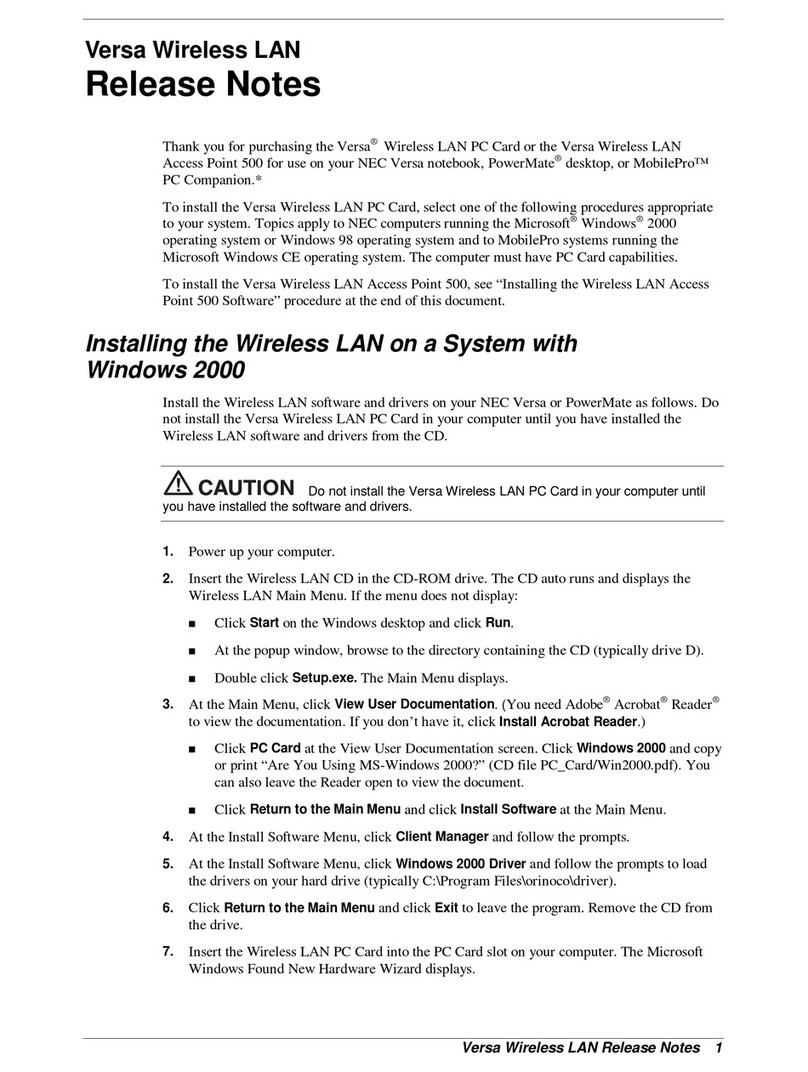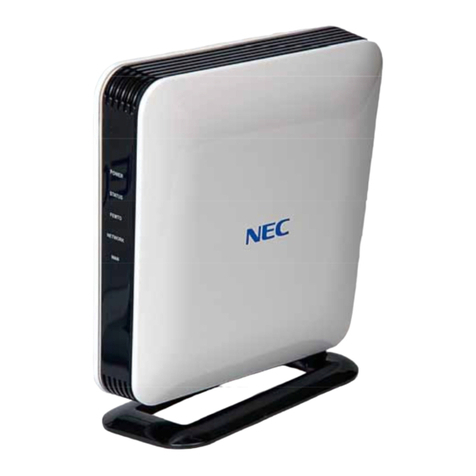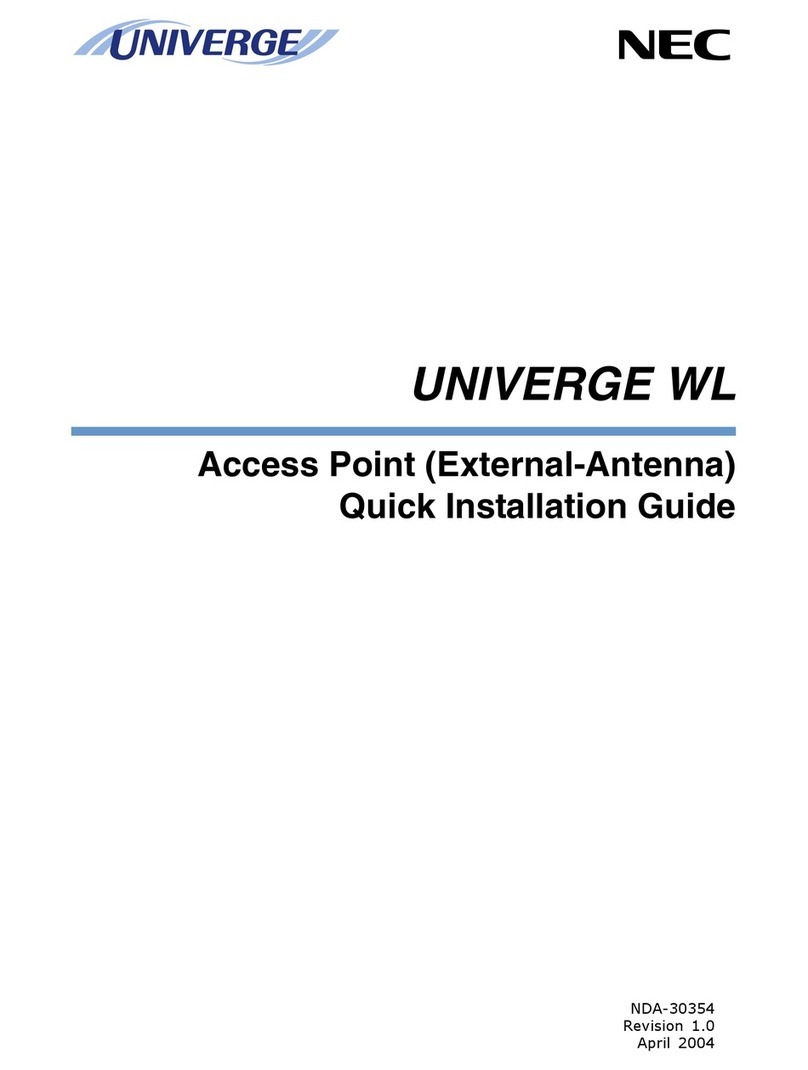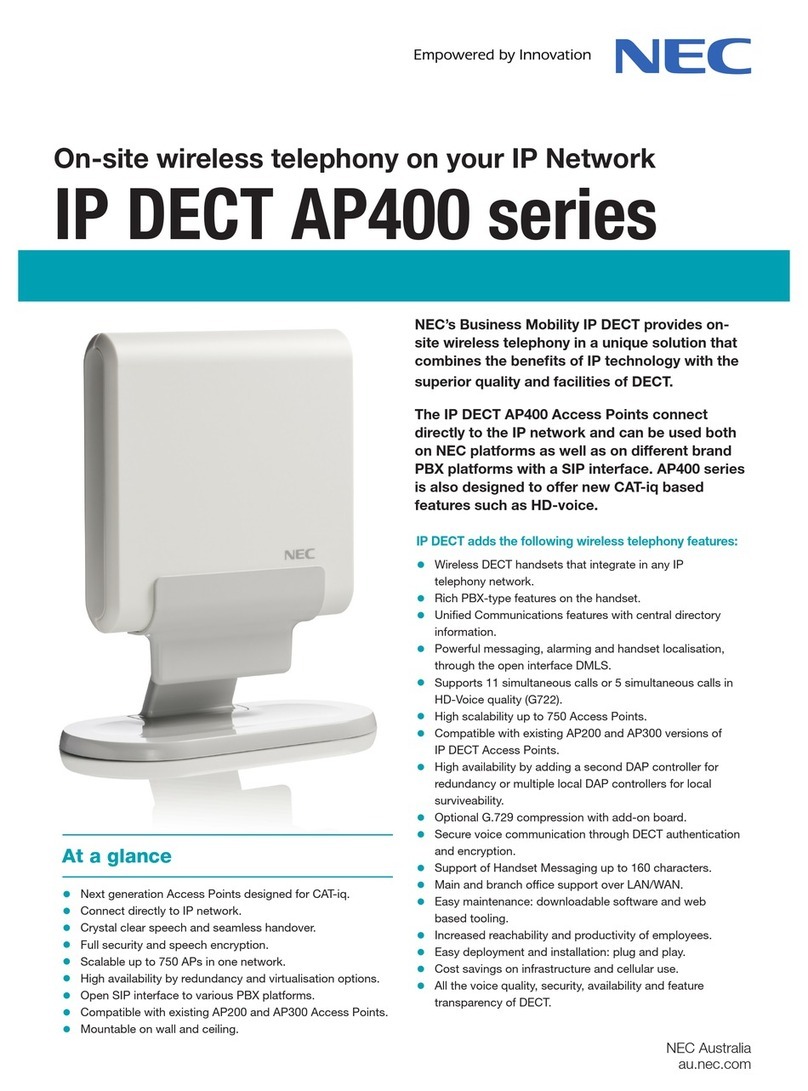© NEC Nederland B.V. 2011 Page 6of 34 AP400 –All Types Installation Manual
Exposure to Radio Frequency (RF) Signals:
This base station is a radio transmitter and receiver. It is designed and manufactured not
to exceed the emission limits for exposure to radio frequency (RF) energy set by the OET
Bulletin 65 Supplement C. These limits are part of comprehensive guidelines and
establish permitted levels of RF energy for the general population. The guidelines are
based on the safety standards previously set by international standards bodies. These
standards include a substantial safety margin designed to assure the safety of all
persons, regardless of age and health.
This device with internal antennas must provide a separation distance of at least 20 cm
from all persons and must not be co-located or operating in conjunction with any other
antenna or transmitter.
Regulatory information Canada
This device complies with Industry Canada licence-exempt RSS standard(s). Operation is
subject to the following two conditions: (1) this device may not cause interference, and (2)
this device must accept any interference, including interference that may cause undesired
operation of the device.
Le présent appareil est conforme aux CNR d'Industrie Canada applicables aux appareils
radio exempts de licence. L'exploitation est autorisée aux deux conditions suivantes : (1)
l'appareil ne doit pas produire de brouillage, et (2) l'utilisateur de l'appareil doit accepter
tout brouillage radioélectrique subi, même si le brouillage est susceptible d'en
compromettre le fonctionnement.
Exposure to Radio Frequency (RF) Signals:
This wireless device is a radio transmitter and receiver. It is designed and manufactured
not to exceed the emission limit for exposure to radio frequency (RF) energy set by the
Ministry of Health (Canada), Safety Code 6. These limits are part of comprehensive
guidelines and established permitted levels of RF energy for the general population.
These guidelines are based on the safety standards previously set by international
standards bodies. These standards include a substantial safety margin designed to
assure the safety of all persons, regardless of age and health.
This device with internal antennas must provide a separation distance of at least 20 cm
from all persons.
This device and its antenna must not be co-located or operating in conjunction with any
other antenna or transmitter.































